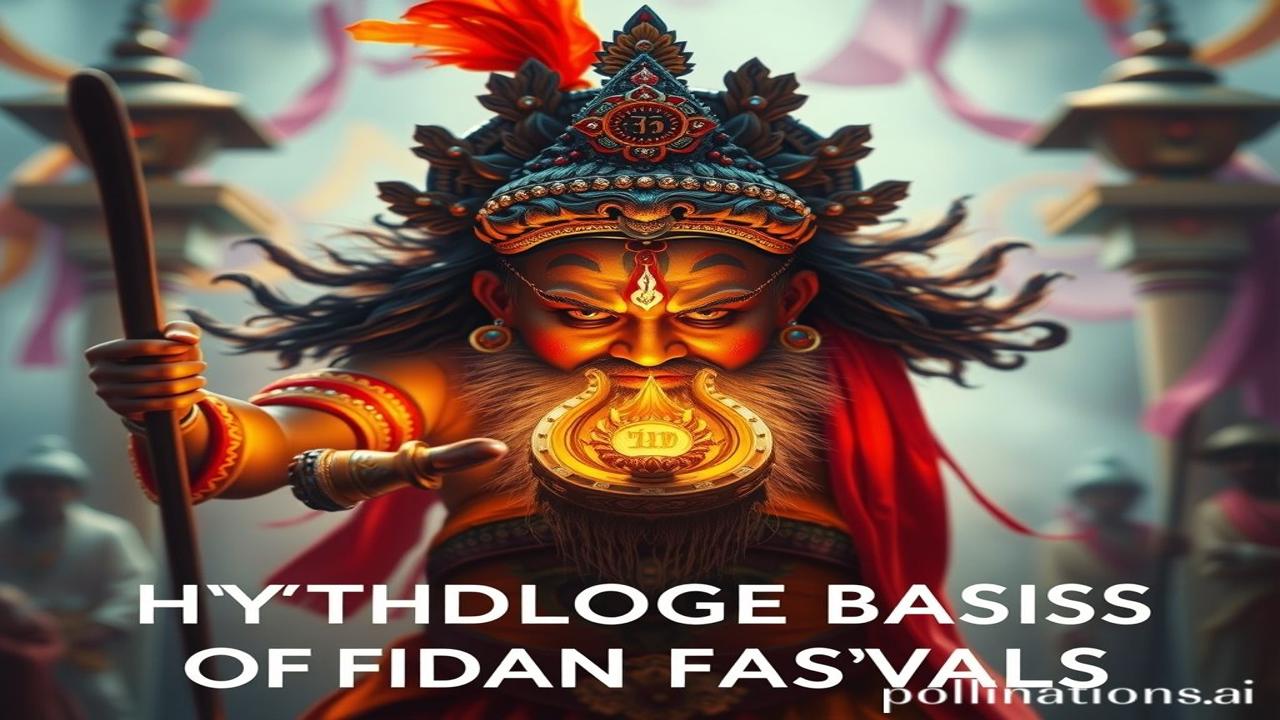Kya Aapne Kabhi Devtaon Ke Aansoo Sune Hai? – The Mythological Roots of Indian Festivals
Kabhi socha hai, jab deepak jalte hain Diwali pe, ya holi ke rangon mein hum kho jaate hain, toh kitni purani kahaniyan humare saath chalti hain? Waqt ki dhool mein kuch rahasya chhup jaate hain, kuch geet dheeme pad jaate hain, lekin yeh tyohaar… yeh toh humari dhadkanon mein basse hain! Yeh sirf calendar par likhi tareekhein nahi hain; yeh ek nadi hain jo humein apne itihas se, apni Sanskriti se, aur apne andar base ‘Bharatiyata’ se jodti hain. To chaliye, thoda sa peeche mudte hain aur dekhte hain ki in tyohaaron ki neev kitni mazboot hai – kitne devtaon ki kahaniyan, kitni prarthnaon ki shakti, aur kitni aashaon ki roshni se bani hui hai.
Tyohaaron Ka Janm – Itihas Ki Zubani
Indian festivals, mere doston, koi aaj ya kal ki baat nahi hain. Inka safar hazaron saal pehle shuru hua tha, jab insaan prakriti se juda hua tha, jab uski zindagi dharohar aur aashaon ke dhaagon se buni hui thi. The Vedas, Puranas, and epics like Ramayana and Mahabharata – yeh sabhi humein in tyohaaron ke baare mein bataate hain.
Think about it – around 1500 BCE, Vedic people started celebrating the changing seasons with rituals and prayers. Yehi rituals aage chalkar elaborate festivals bane, like Diwali celebrating the return of Lord Rama, or Holi, the victory of good over evil. The importance of agriculture in ancient India also played a significant role; festivals like Pongal and Baisakhi are harvest festivals thanking the gods for a bountiful crop.
Zameeni Sach – Rajaon Se Lekar Kisanon Tak
Imagine Ayodhya during Ram Navami, the birthday of Lord Rama. Raja Dasharatha, inke darbar mein logon ka mela laga hua hai. Sangeet baj raha hai, nach ho raha hai, aur har koi khush hai. Maano ek yug aa gaya hai, jab dharm aur nyay ka raj hoga.
Or think about a small village during Holi. The air smells of gulal and gulaab jal. Bachhe has rahe hain, bade logon ko rang laga rahe hain. “Bura na mano Holi hai!” ki goonj har taraf fail rahi hai. Kisan apne kheton mein khade hain, apne faslon ko dekhkar khush ho rahe hain, aur bhagwan ko dhanyavaad de rahe hain.
Ma Rukmini ne aaj naye kapde pehne, kyunki mandir mein utsav tha… She remembers the stories her grandmother used to tell her, about how Krishna played pranks on the gopis during Holi. She smiles, knowing that the spirit of joy and mischief will never die.
Dharohar Aur Pehchaan – Aaj Ka Bharat Aur Tyohaar
Today, in our busy lives, these festivals are more important than ever. They remind us of our roots, bring families together, and strengthen our community bonds. Whether it’s the vibrant celebrations of Durga Puja in Kolkata, the joyous dances of Navratri in Gujarat, or the quiet devotion during Eid, Indian festivals showcase the diversity and unity of our nation.
Diwali ki lights se lekar Ganesh Chaturthi ke visarjan tak, har ek festival Bharatiyata ka prateek hai. They remind us who we are, where we come from, and what we stand for. In a world that is becoming increasingly globalized, these festivals help us maintain our unique cultural identity.
Mazedar Tathya Ya Bhram-Bhanjak
Log samajhte hain ki Diwali sirf Lakshmi Puja ka tyohar hai, lekin asli sach yeh hai ki yeh tyohar pure Bharat mein alag-alag tarike se manaya jaata hai. Some communities celebrate the return of Lord Rama, while others worship Kali, the goddess of power and strength. Diwali is a celebration of light over darkness, knowledge over ignorance, and good over evil – regardless of which deity you worship.
Ek aur interesting fact: Did you know that Holi is celebrated for more than one day in some parts of India? In Barsana, Uttar Pradesh, women playfully beat men with sticks during a custom called “Lathmar Holi.” This tradition is a symbolic reenactment of Krishna teasing Radha and her friends.
Drishya Aur Bhavnayein
Imagine the smell of incense and marigolds hanging heavy in the air during Dussehra. The sounds of drums and trumpets fill the streets. The temple walls, worn smooth by centuries of devotion, feel cool to the touch. The taste of jalebi and samosas explodes on your tongue. These are the sensory experiences that make Indian festivals so special.
Picture the bright colors of rangoli decorating the floors of homes during Diwali. The warm glow of diyas illuminating the night. The laughter of children playing with sparklers. The feeling of love and connection that fills the air.
Antim Vichar Ya Uddharan
Indian festivals are more than just celebrations; they are a window into our soul. They are a reminder that even in the darkest of times, hope and joy can prevail. They are a testament to the enduring power of faith, tradition, and community.
“सर्व मंगल मांगल्ये शिवे सर्वार्थ साधिके ।
शरण्ये त्र्यम्बके गौरी नारायणी नमोऽस्तुते ॥”
Just like this shloka, may these festivals bring auspiciousness, success, and protection to all of us. May they fill our hearts with love, our homes with light, and our lives with joy. Chaliye, hum apne tyohaaron ko samman dein, apni dharohar ko samjhein, aur Bharatiyata ko apnaen.
